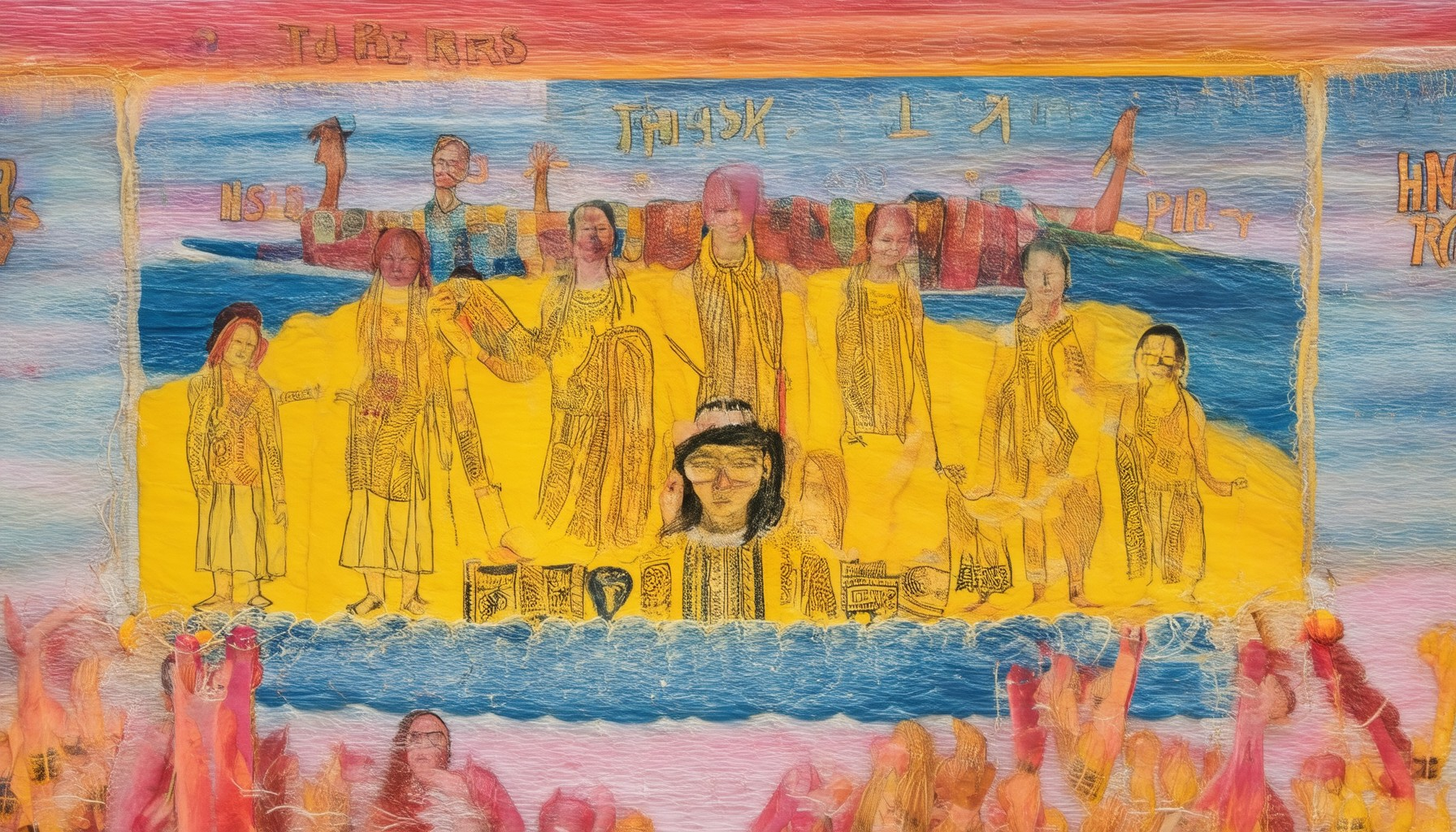Exploring the world through cultural awareness trips can be a transformative experience, offering insights into diverse traditions, histories, and ways of life. For those seeking to deepen their understanding and foster meaningful connections, the journey begins with intention and ends with a profound appreciation for cultural differences. From respecting local customs to embracing new perspectives, the 5 Rs of cultural humility—Respect, Reflect, Relate, Respond, and Remember—provide a comprehensive guide to navigating these experiences with grace and insight. Whether traveling to explore ancient ruins, participate in vibrant festivals, or simply engage with local communities, cultural awareness trips serve as a bridge between cultures, fostering empathy, breaking down stereotypes, and promoting global understanding. By approaching these journeys with curiosity and respect, travelers can leave not only with memories but also with a renewed perspective on the shared human experience.
Key Takeaways
- Understand Yourself First: Reflect on your beliefs to approach cultural interactions with empathy.
- Learn About Different Cultures: Gain knowledge on customs, traditions, and social norms.
- Respect Diversity: Avoid assumptions and acknowledge the unique contributions of others.
- Communicate Effectively: Be mindful of verbal and non-verbal cues to bridge cultural gaps.
- Promote Social Responsibility: Create inclusive environments through advocacy and support for diversity.
- Practice Cultural Humility: Adapt your behavior and build mutually beneficial relationships.
- Take Accountability: Be mindful of your actions and their impact in cross-cultural settings.

Cultural Awareness Example
Cultural awareness can be demonstrated through various everyday actions and interactions. Here are some examples:
- Communication Styles: Understanding that direct eye contact may be acceptable in some cultures but perceived as intrusive in others.
- Social Interactions: Knowing that greetings like hugs or handshakes vary depending on the cultural background of those involved.
- Dining Etiquette: Recognizing differences in mealtime customs, such as the use of chopsticks versus Western cutlery.
- Holiday Celebrations: Being aware of and respecting cultural variations in celebrating holidays, like Christmas or other seasonal events.
- Clothing Norms: Understanding what is considered appropriate attire for different social settings, such as business meetings or casual gatherings.
Cultural awareness is about recognizing and respecting these differences, which helps bridge cultural gaps and foster mutual understanding and respect in diverse environments.
Cultural Travel Tourism Activities
Cultural travel tourism activities encompass a diverse range of experiences designed to immerse travelers in the cultural fabric of a destination. These activities often go beyond traditional sightseeing to offer deeper connections with local traditions, history, and customs. Here are some key forms of cultural travel tourism:
- Cultural Events and Festivals: Participating in local celebrations, fairs, and festivals allows visitors to engage with the culture firsthand. Examples include food festivals, music performances, and historical reenactments.
- Arts and Crafts Workshops: Taking part in workshops or classes led by local artisans provides insight into traditional crafts, such as pottery, weaving, or jewelry-making.
- Historical and Archaeological Tours: Visiting ancient ruins, historical sites, and museums offers a window into a region’s past, often led by knowledgeable guides who provide context and storytelling.
- Culinary Tourism: Exploring local cuisine through cooking classes, food tastings, and market visits helps travelers understand the cultural significance of food in a destination.
- Folklore and Storytelling: Engaging with local storytellers or performers who share legends, myths, and traditional tales adds an interactive element to the travel experience.
- Traditional Homestays: Staying in accommodations like guesthouses, farm stays, or ryokans allows travelers to live like locals, experiencing daily life and customs firsthand.
- Participatory Sports and Games: Joining in local sports or games, such as bullfighting, rugby matches, or traditional dance competitions, offers a unique way to connect with the culture.
- Eco-Tourism with Cultural Elements: Combining environmental exploration with cultural immersion, such as visiting indigenous communities or participating in sustainable practices, bridges nature and tradition.
These activities not only enrich the travel experience but also foster cross-cultural understanding and appreciation. By engaging in these practices, travelers can leave with more than just memories—they can bring back a deeper understanding of the destinations they’ve visited.

Cultural Awareness in Tourism
Cultural awareness in tourism refers to the understanding and appreciation of diverse cultures, traditions, and customs encountered during travel or hospitality services. It involves recognizing the importance of cultural differences and respecting them to enhance the travel experience for both guests and service providers.
The Importance of Cultural Awareness
-
- Improves guest satisfaction by meeting cultural expectations.
Benefits of Cultural Awareness
-
- Personal growth through exposure to different cultures.
Challenges in Promoting Cultural Awareness
-
- Stereotyping and biases in marketing materials.
How to Implement Cultural Awareness
-
- Train staff on cultural sensitivity and diversity.
By prioritizing cultural awareness, tourism businesses can create meaningful experiences for everyone involved, fostering a more inclusive and respectful industry.

What Are the 5 Guidelines for Cultural Awareness?
- Understand Yourself First: Before engaging with different cultures, take time to reflect on your own beliefs, biases, and values. This self-awareness helps you approach cultural differences with empathy and openness.
- Learn About Different Cultures: Educate yourself on the history, traditions, and perspectives of the cultures you interact with. This includes understanding their customs, languages, and social norms.
- Respect Diversity: Acknowledge and appreciate the unique contributions of different cultures. Avoid assumptions or judgments about people based on their background or identity.
- Communicate Effectively: When interacting with individuals from diverse backgrounds, use clear and respectful communication. Be mindful of verbal and non-verbal cues, as these can vary significantly across cultures.
- Promote Social Responsibility: Use cultural awareness as a foundation to foster inclusive environments where everyone feels valued and respected. Advocate for policies and practices that support diversity and inclusion.
How to Demonstrate Cultural Awareness
Cultural awareness involves understanding and respecting the customs, beliefs, and practices of different cultures. Here are effective ways to demonstrate cultural awareness:
- Educate Yourself:** – Learn about various cultures through books, documentaries, and travels. – Stay informed about holidays, traditions, and practices of diverse groups. – Understand the history and context behind cultural practices.
- Practice Empathy:** – Put yourself in others’ shoes to understand their perspectives and feelings. – Show compassion and patience when interacting with people from different backgrounds.
- Respect Local Customs:** – Pay attention to local norms and avoid behaviors that may offend others. – Listen to advice from locals or community leaders when navigating cultural differences.
- Engage in Cultural Activities:** – Participate in cultural events, festivals, and traditions to connect with others. – Try traditional foods, learn basic phrases, and immerse yourself in cultural experiences.
- Advocate for Diversity:** – Share positive stories and reduce stereotypes through social media and conversations. – Support initiatives that promote inclusivity and cultural exchange.
- Collaborate Across Cultures:** – Work with individuals from different backgrounds to foster mutual understanding. – Engage in discussions and projects that celebrate diversity and unity.
- Reflect on Your Own Culture:** – Recognize and appreciate your own heritage while being curious about others’. – Approach cultural differences with curiosity rather than judgment.
Demonstrating cultural awareness not only enriches your own life but also fosters meaningful connections with others around the world. By taking these steps, you contribute to a more inclusive and harmonious society.

The 5 Rs of Cultural Humility
Cultural humility is a cornerstone of meaningful cross-cultural interactions, fostering understanding, respect, and collaboration among individuals from diverse backgrounds. Below are the five key principles, known as the “5 Rs,” that encapsulate the essence of cultural humility:
- Recognition: Acknowledging and honoring the unique identities, traditions, and perspectives of others. This principle emphasizes the importance of seeing individuals as whole, complex beings rather than reducing them to stereotypes or categories.
- Respect: Valuing and honoring cultural differences while maintaining dignity and empathy for all people. Respect involves listening actively, giving space for others to express themselves, and avoiding assumptions based on culture, gender, or background.
- Responsiveness: Being adaptable and open to changing one’s behavior or perspective in response to cultural contexts. This includes learning local customs, languages, and norms to create meaningful connections and minimize misunderstandings.
- Reciprocity: Engaging in mutually beneficial exchanges that honor the contributions of others. Whether through shared experiences, dialogue, or collaborative projects, reciprocity ensures that relationships are built on equality and mutual respect.
- Responsibility: Taking accountability for one’s actions and words in cross-cultural settings. This involves being mindful of the impact of our choices and striving to uphold ethical standards that benefit everyone involved.





0 Comments